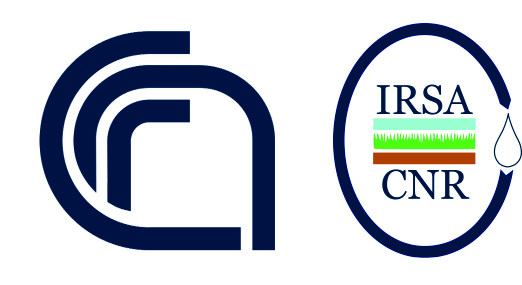Scheda di dettaglio – i prodotti della ricerca
| Dato | Valore |
|---|---|
| Title | Ultima ratio survival strategy of freshwater Synechococcus: from single cells to monoclonal microcolonies |
| Abstract | Freshwater Synechococcus appear as single-cells of different morphologies and as microcolonies (from 5 to 50 cells). In oligotrophic lakes the seasonal succession of picocyanobacteria is characterized by the dominance of single-cell Synechococcus in spring followed by the appearance of microcolonies in autumn. In eutrophic lakes microcolonies are made harder to single out because of the presence of the bloom-forming colonials of Microcystis or Aphanothece genera. The issue of formation and persistence of picocyanobacterial microcolonies is the object of this article. More specifically, we address the following questions: 1) Are microcolonies derived from a single-cell or do they result from cell-clumping? 2) Which is the most important factor stimulating microcolony formation? 3) Do bacteria associated to Synechococcus have a role in microcolony formation? 4) Are there interactions between different Synechococcus strains? To answer these questions we undertook laboratory experiments with two freshwater single-cell Synechococcus strains with different phycobiliproteins, to study their morphological response to nanoflagellate grazing and UV radiation (UVR). Over five days, we followed the dynamics of single-cells, microcolonies, and predators by flow cytometry, in semi-continuous cultures with four treatments: +UVR, with and without predators; -UVR, with and without predators. The variations of the maximum quantum yield (Fv/Fm) in the treatments were also measured (PhytoPAM) to quantify the fitness of the strains under the different stressing factors. The results obtained allowed us to speculate on the ecological consequences of microcolony formation in the trade-off between Photosystem II activity, growth rate and stress protection of Synechococcus, evaluating the synergistic/antagonistic role of grazing and UVR in microcolony formation. These results can shed light on the dynamics of freshwater Synechococcus morphology in oligotrophic and eutrophic lakes, posing further interesting questions to the microbial ecology of freshwater ecosystems. |
| Source | SAME13: EMBO Conference on Aquatic Microbial Ecology, Stresa (VB), 8-13 settembre 2013 |
| Keywords | PicocyanobacteriaMicrocoloniesUVPredation effects |
| Year | 2013 |
| Type | Presentazione |
| Authors | Cristiana Callieri; Stefano Amalfitano; Gianluca Corno; Roberto Bertoni |
| Text | 282552 2013 Picocyanobacteria Microcolonies UV Predation effects Ultima ratio survival strategy of freshwater Synechococcus from single cells to monoclonal microcolonies Cristiana Callieri; Stefano Amalfitano; Gianluca Corno; Roberto Bertoni Cristiana Callieri; Gianluca Corno; Roberto Bertoni CNR ISE VB Stefano Amalfitano CNR IRSA ROMA Freshwater Synechococcus appear as single cells of different morphologies and as microcolonies from 5 to 50 cells . In oligotrophic lakes the seasonal succession of picocyanobacteria is characterized by the dominance of single cell Synechococcus in spring followed by the appearance of microcolonies in autumn. In eutrophic lakes microcolonies are made harder to single out because of the presence of the bloom forming colonials of Microcystis or Aphanothece genera. The issue of formation and persistence of picocyanobacterial microcolonies is the object of this article. More specifically, we address the following questions 1 Are microcolonies derived from a single cell or do they result from cell clumping 2 Which is the most important factor stimulating microcolony formation 3 Do bacteria associated to Synechococcus have a role in microcolony formation 4 Are there interactions between different Synechococcus strains To answer these questions we undertook laboratory experiments with two freshwater single cell Synechococcus strains with different phycobiliproteins, to study their morphological response to nanoflagellate grazing and UV radiation UVR . Over five days, we followed the dynamics of single cells, microcolonies, and predators by flow cytometry, in semi continuous cultures with four treatments UVR, with and without predators; UVR, with and without predators. The variations of the maximum quantum yield Fv/Fm in the treatments were also measured PhytoPAM to quantify the fitness of the strains under the different stressing factors. The results obtained allowed us to speculate on the ecological consequences of microcolony formation in the trade off between Photosystem II activity, growth rate and stress protection of Synechococcus, evaluating the synergistic/antagonistic role of grazing and UVR in microcolony formation. These results can shed light on the dynamics of freshwater Synechococcus morphology in oligotrophic and eutrophic lakes, posing further interesting questions to the microbial ecology of freshwater ecosystems. Published version In SAME13 I EMBO Conference on Aquatic Microbial Ecology Stresa VB , 8 13 settembre 2013 . SAME13 EMBO Conference on Aquatic Microbial Ecology Stresa VB 8 13 settembre 2013 Internazionale Contributo PPT PPT_SAME13_Callieri.pdf Presentazione roberto.bertoni BERTONI ROBERTO cristiana.callieri CALLIERI CRISTIANA stefano.amalfitano AMALFITANO STEFANO gianluca.corno CORNO GIANLUCA TA.P04.016.004 Ecologia teorica e applicata degli ecosistemi acquatici |
